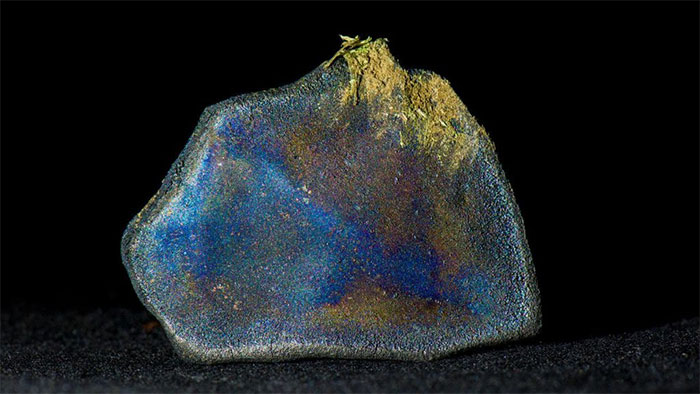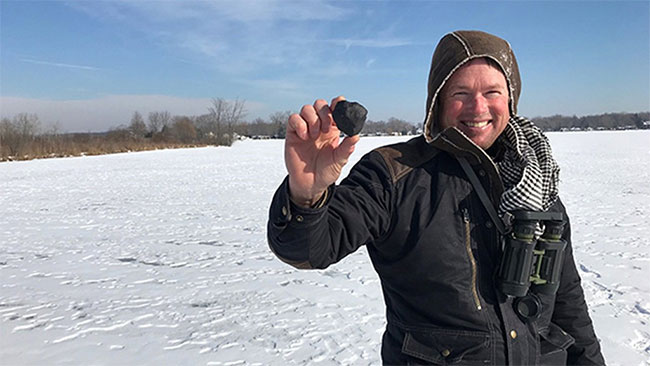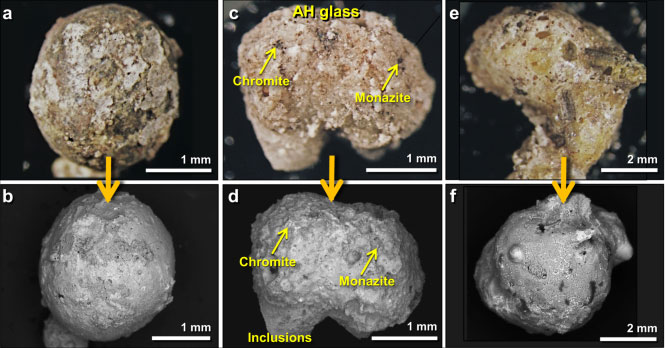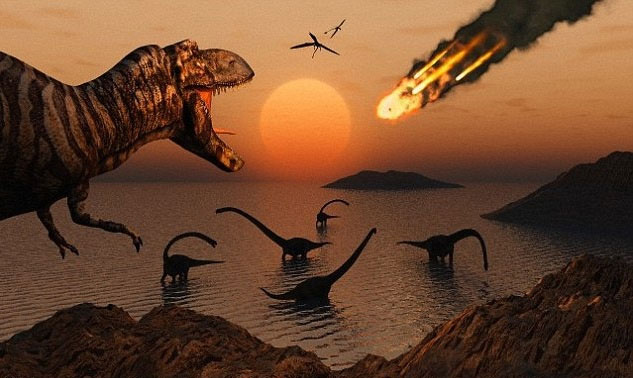In addition to meteors carrying compounds formed billions of years ago, spacecraft have also crashed into Earth.
 On the south coast of Tasmania, Australia, researchers captured a rare video of a blue light meteorite. This video was captured by the Australian National Science Agency (CSIRO) controlled research vessel Investigator as the fireball plunged into Earth’s atmosphere. The meteorite quickly crossed the sky and disintegrated in the Tasman Sea. Eyewitnesses said the meteorite shone a green light.
On the south coast of Tasmania, Australia, researchers captured a rare video of a blue light meteorite. This video was captured by the Australian National Science Agency (CSIRO) controlled research vessel Investigator as the fireball plunged into Earth’s atmosphere. The meteorite quickly crossed the sky and disintegrated in the Tasman Sea. Eyewitnesses said the meteorite shone a green light.
 A rainbow-colored space rock struck the region of Costa Rica in 2019. Their fragments are strewn around the villages of La Palmera and Aguas Zarcas. According to some studies, this asteroid may contain the chemical elements that form life. The seven-color meteorite originally separated from an asteroid, which originated in an ancient nebula. According to LiveScience, this nebula constitutes our solar system. Rainbow meteorites contain complex carbon compounds, which are likely to include amino acids. These compounds can combine to form proteins or molecules like DNA.
A rainbow-colored space rock struck the region of Costa Rica in 2019. Their fragments are strewn around the villages of La Palmera and Aguas Zarcas. According to some studies, this asteroid may contain the chemical elements that form life. The seven-color meteorite originally separated from an asteroid, which originated in an ancient nebula. According to LiveScience, this nebula constitutes our solar system. Rainbow meteorites contain complex carbon compounds, which are likely to include amino acids. These compounds can combine to form proteins or molecules like DNA.
 In January 2018, a meteorite collapsed in the Hamburg, Michigan area and fell into a frozen lake. After being analyzed in 2020, scientists say the meteorite contains thousands of organic compounds dating back billions of years. These compounds are inherently present from the early days of the system
In January 2018, a meteorite collapsed in the Hamburg, Michigan area and fell into a frozen lake. After being analyzed in 2020, scientists say the meteorite contains thousands of organic compounds dating back billions of years. These compounds are inherently present from the early days of the system
This discovery means that asteroids that fell during the Young Earth period could carry similar molecules. At that point, organic compounds from meteorites could be incorporated into primitive microorganisms, the team said. Studying the meteorite that falls in Michigan will give people a glimpse of the first life on the planet.
 The prehistoric village of Abu Hureyra in northern Syria was inhabited by the first known peasants on Earth. However, one event destroyed the entire city, leaving ruins covered in carbon. In the rubble, excavation equipment found glass marbles formed from terracotta, calcined iron, molten sulfur and nanodiamonds. After the analysis, scientists said the materials formed at a temperature of around 2,000 degrees C. The team concluded that debris from a comet exploded in the village and released a wave. intense heat waves, burning the village and the ground below.
The prehistoric village of Abu Hureyra in northern Syria was inhabited by the first known peasants on Earth. However, one event destroyed the entire city, leaving ruins covered in carbon. In the rubble, excavation equipment found glass marbles formed from terracotta, calcined iron, molten sulfur and nanodiamonds. After the analysis, scientists said the materials formed at a temperature of around 2,000 degrees C. The team concluded that debris from a comet exploded in the village and released a wave. intense heat waves, burning the village and the ground below.
 According to scientists, with an impact angle of about 60 degrees above the horizon, the asteroid that struck Earth 65 million years ago completely wiped out the dinosaur. This orbit causes the asteroid to spit out three times more sulfur and carbon dioxide into the atmosphere. The gas released by the collision caused global climate change and killed 75% of all life on Earth, including all non-bird dinosaurs.
According to scientists, with an impact angle of about 60 degrees above the horizon, the asteroid that struck Earth 65 million years ago completely wiped out the dinosaur. This orbit causes the asteroid to spit out three times more sulfur and carbon dioxide into the atmosphere. The gas released by the collision caused global climate change and killed 75% of all life on Earth, including all non-bird dinosaurs.


